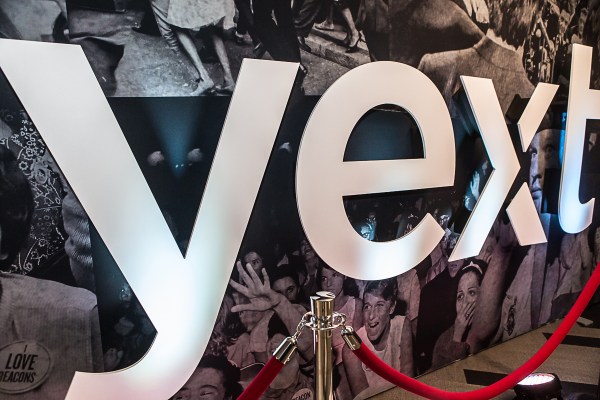It looks like we can add another to the string of IPOs that at least look like they’ve been successful — with Yext, too, popping more than 20% once its shares made their debut this morning.
Shares of Yext went as high as $14 or so after the company gave its final pricing at $11 last night — meaning it raised at least $115.5 million in its IPO. Following Okta, and before that Mulesoft and even Snap, Yext seems to have capitalized on the open so-called “IPO window,” with investors and executives looking to cash in on the appetite for new tech IPOs. After a drought of tech IPOs last year, it looks like interest is steadily ramping up in the first half of the year.
That’s good for not just the companies looking to raise capital, but also investors and employees that have been waiting to finally see a cash-out for their patience. Yext, for example, was started in 2006, and it’s not alone in a large number of companies that have been waiting for the right time to finally go public. With many larger startups like Airbnb and Uber opting to stay private, investors are at least looking for some way to start pulling in returns for their funds — and Snap, at the very least, revealed the interest Wall Street had and opened the door for these companies to finally get their IPOs out of the way.
Yext creates software that ensures that company information like addresses are the same, and accurate, across multiple different apps and networks that people use. Users probably don’t look for locations or addresses on a retailer’s website anymore, instead opting for Google Maps or Yelp. Yext gives those businesses a way to make sure all the right information is the same across all those platforms.
The $11 pricing it gave last night was also above the original range it set, which was somewhere between $8 and $10. We’ve seen companies so far this year continuing to raise their price ranges or settle on the higher end of those ranges, meaning there’s more demand for shares than would have otherwise been expected. It’s still an optimization game, with companies testing the waters with banks to figure out the right price but still having to find a way to make sure there’s a pop on day one and that everyone gets paid.
